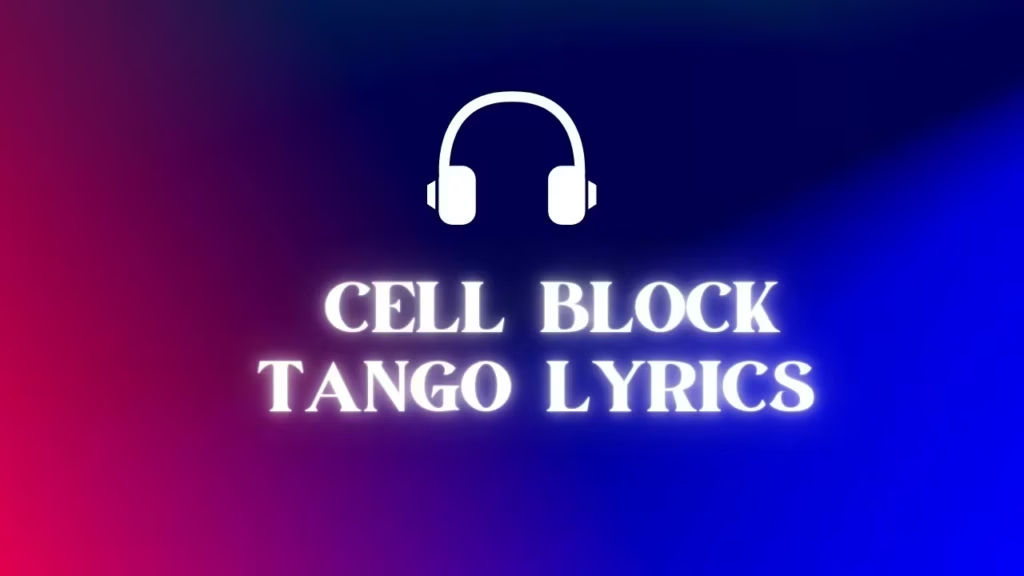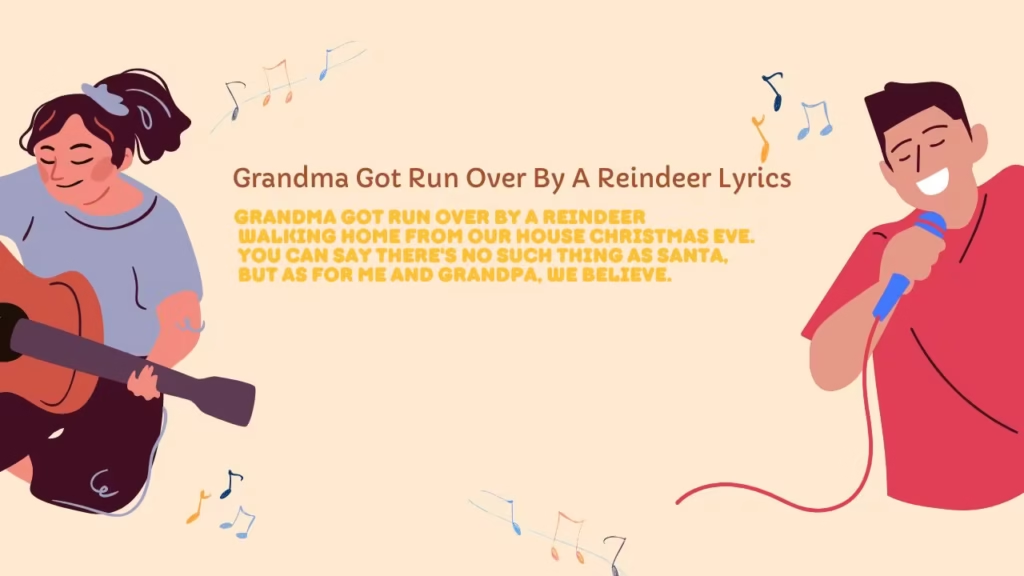Chicago was created by the legendary duo John Kander (music) and Fred Ebb (lyrics), premiering on Broadway in 1975. Based on a 1926 play by Maurine Dallas Watkins, it tells the story of two vaudevillian murderesses, Roxie Hart and Velma Kelly, as they manipulate the media and legal system during the Jazz Age.
Among the musical’s standout numbers, Cell Block Tango rises to the top. It features six female inmates—Velma, Liz, Annie, June, Hunyak, and Mona—each sharing how they ended up in jail for killing their significant others. Their stories unfold through a blend of dark humor, sultry jazz, and fierce choreography.

Cell Block Tango lyrics And Its Meaning
Here is the lyrics and its meaning.
🔁 Opening Verse
Pop, Six, Squish, Uh Uh, Cicero, Lipschitz
And now, the six merry murderesses of the Cook County Jail…
🎭 Meaning:
This introductory chant serves as both a roll call and a motif, assigning each woman a rhythmic word that encapsulates her story. It sets a dramatic, vaudevillian tone and introduces the theatrical framing of the piece: a stylized, darkly comedic confession circle.
🔂 Chorus
He had it coming, he had it coming
He only had himself to blame
If you’d have been there, if you’d have seen it
I betcha you would have done the same
🎭 Meaning:
This recurring chorus acts as both justification and defiance. Each woman insists her victim deserved what happened. It reinforces the central theme of blurred morality and invites the audience to consider whether the crimes were, in fact, understandable or even excusable.
🔪 Verse – Liz (Pop)
You know how people have these little habits that get you down…
So I took the shotgun off the wall and I fired two warning shots into his head.
🎭 Meaning:
Liz’s story is exaggerated and satirical. Her husband popping gum annoys her to the point of violence. The humor here masks a deeper commentary on impulse, domestic tension, and how seemingly trivial irritations can escalate in unhealthy relationships.
🧪 Verse – Annie (Six)
I met Ezekiel Young from Salt Lake City… One of those Mormons, you know…
Some guys just can’t hold their arsenic.
🎭 Meaning:
Annie’s tale highlights deception and betrayal. Her partner lied about being single, and she poisoned him upon discovering he had six wives. Her quip about arsenic mocks the seriousness of murder while criticizing men who manipulate women.
Verse – June (Squish)
Now I’m standing in the kitchen, carving up the chicken for dinner…
He ran into my knife ten times.
🎭 Meaning:
June’s version is delivered in a deadpan tone, evoking black humor. She implies self-defense, though the repetition (“ten times”) undermines her claim. The story satirizes claims of accidental violence while poking fun at jealous rage and denial.
⚖️ Verse – Hunyak (Uh-Uh)
(Spoken in Hungarian)
Mit kersek, én itt?… Uncle Sam says I did it, but I didn’t…
🎭 Meaning:
Hunyak is the only character who pleads innocence. Her speech, mostly in Hungarian, reflects isolation, injustice, and a tragic undertone. She is the only one who doesn’t claim justification—but her voice is lost in translation, symbolizing how justice can overlook the marginalized.
🎪 Verse – Velma (Cicero)
My sister Veronica and I had this double act…
When I was washing the blood off my hands I even knew they were dead.
🎭 Meaning:
Velma’s betrayal runs deep—her husband and sister perform a sexual act behind her back. Her story illustrates shocking betrayal and a kind of dissociation or trauma response (“I blacked out”). Her justification is rooted in emotional devastation.
🎨 Verse – Mona (Lipschitz)
I loved Al Lipschitz more than I can possibly say…
He saw himself as alive and I saw him dead.
🎭 Meaning:
Mona’s story combines heartbreak with sarcasm. Her partner’s infidelity (with both men and women) is brushed off as “artistic differences.” She mocks the language of breakups, revealing both pain and bitterness underneath her deadpan humor.
🎶 Chorus Repetition & Layered Harmony:
They had it coming, they had it coming…
If they used us and they abused us… How could they tell us that we were wrong?
🎭 Meaning:
This chorus becomes more complex and layered, with overlapping lines and harmonies. It underscores the collective voice of the women, bonding over shared experiences of abuse, betrayal, and retribution. It’s the climax of their unified justification.
📌 Final Taglines & Callbacks
You pop that gum one more time…
Single my ass…
Number seventeen, the spread eagle…
Artistic differences…
🎭 Meaning:
These callbacks reinforce the memorable punchlines of each murderess’s story. By ending on these catchphrases, the song blends comedy with tragedy and highlights the absurdity of their justifications, drawing attention to the fine line between guilt and defense.
Legendary Performers and Fosse’s Signature Style
The original Broadway production starred Chita Rivera as Velma Kelly, whose performance helped define the bold, unapologetic tone of Cell Block Tango. The musical was choreographed by Bob Fosse, whose stylized, angular movements and use of jazz dance became a hallmark of the show. His influence is evident in every sharp snap and provocative pose within the number.
The song received renewed global attention with the 2002 Oscar-winning film adaptation of Chicago, featuring Catherine Zeta-Jones, Queen Latifah, and Renée Zellweger. Zeta-Jones’s fierce portrayal of Velma won her an Academy Award and introduced a new generation to the chilling charm of the six merry murderesses of the Cook County Jail.
Character Analysis: The Six Murderesses of the Cook County Jail
Each woman in Cell Block Tango delivers a monologue explaining her crime. Their common thread? They all claim their victims “had it coming.”
- Velma – Found her husband and sister in bed together. Bang, bang.
- Liz – Killed her cheating partner for chewing gum loudly one last time.
- Annie – Poisoned her spouse when he accused her of cheating (even though she was).
- June – Stabbed her husband after a jealous argument.
- Hunyak – The only one who proclaims her innocence with the line “Not guilty!” in Hungarian.
- Mona – Killed her artist boyfriend after discovering he had multiple lovers.
These vignettes blend humor, drama, and rhythm, giving each character a distinct voice. The repeated line “He had it coming” serves both as justification and ironic commentary on personal accountability, social justice, and gender roles.
Themes: Empowerment, Manipulation, and Morality
Cell Block Tango doesn’t offer easy answers. Instead, it delves into:
- Justice vs. Vengeance – Are these women seeking justice, or are they simply taking revenge?
- Female Empowerment – Each character seizes her narrative, owning her choices unapologetically.
- Media Manipulation – Like the rest of Chicago, the song critiques how stories—especially about women—are packaged, sold, and sensationalized.
- Moral Ambiguity – The dark humor forces the audience to question who’s truly “guilty” and whether they sympathize with the killers more than the victims.
Cultural Legacy and Modern-Day Relevance
Over the decades, Cell Block Tango has transcended the stage. It’s been parodied and celebrated in every imaginable setting—from high school drama departments to drag performances. The 2002 film revitalized its fame, and now, decades later, it’s trending on platforms like TikTok and YouTube, where users reinterpret the choreography and dialogue with fresh feminist flair.
Even pop culture phenomena like Glee have tackled it in bold renditions, such as the memorable Season 5 performance. Its biting lyrics and visual punch make it a favorite for viral reinterpretation.
Famous Covers and Parodies
Here are a few standout reimaginings that have kept Cell Block Tango alive in pop culture:
- The Cast of Glee – A bold school auditorium version that emphasized character.
- Drag Queens in RuPaul’s Drag Race & live shows – Often perform it with exaggerated flair and theatrical costume.
- Musical Theatre Schools – Frequently re-stage the number in student showcases, keeping the next generation engaged.
- YouTube Covers – From jazz orchestras to acapella groups, the piece continues to evolve through independent artists online.


